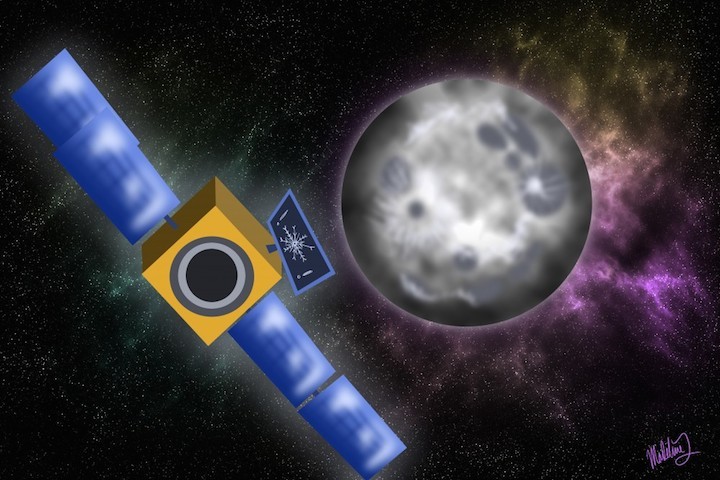30.10.2017
LunaH-Map will reveal details about ice deposits on the moon
The new ASU CubeSat mission breaks new ground for the University's forays into space

The LunaH-Map mission is an ASU cube satellite mission aimed to search for hydrogen deposits on the moon. The mission will be one of the first CubeSat missions to leave the Earth’s orbit.
LunaH-Map will orbit the moon for two months and perform more than 140 low-altitude fly-bys to survey permanently shadowed areas of the moon’s south pole, primarily its craters.
The mission will produce the most detailed map to date of the moon and reveal details of frozen water deposits discovered by previous missions. This information about resources like water on the moon has the potential to help NASA plan manned deep space exploration missions. It also has the potential to help establish a human settlement on the moon.
“We know from similar missions that have gone over that area, there is water-ice, but none have had the resolution we’ll be able to be get," Robert Amzler, a senior studying aerospace engineering at ASU said. "We’ll be able to measure the abundance of the water-ice."
The mission was selected by NASA’s Science Mission Directorate as a secondary payload on the first Exploration Mission (EM-1) using the Space Launch System (SLS), originally scheduled to launch in July 2018. Even though construction of the Luna-H Map spacecraft is on schedule, the launch of EM-1 has been delayed until 2019.
Though ASU has built instruments for other space exploration missions, LunaH-Map is the first mission requiring the University to plan and design the craft from the ground up.
“It's a big step for ASU," Nathaniel Struebel, a senior studying aerospace engineering, said. "It demonstrates that we’re capable of space exploration missions."
The LunaH-Map may not have the budget of a large NASA mission, but the team faces many of the same challenges. CubeSats are easier to produce and more cost effective than large spacecrafts, but the small size of the crafts poses its own set of challenges.
The LunaH-Map craft, for example, produces a lot of heat for its size. Thermal issues, like the possibility of the craft freezing while in orbit around the moon, are some of the many obstacles the team has to engineer solutions for.
“It's hard to compare our mission to say a huge NASA mission, because we have a different budget," Savannah Puckett, a software and hardware test engineer with AZ Space Technologies said. "We have a different team makeup, but, overall, we use the same engineering practices."
Puckett called the the craft’s wire harness their "octopus" and said one of the biggest engineering challenges they face in the Luna mission is fitting all the wire into a spacecraft the size of a shoebox.
Although not as high profile as a mission like those to land rovers on Mars, the LunaH-Map mission has the potential to uncover resources that could help establish human settlements on moon and push deep space exploration forward.
Quelle: The State Press
